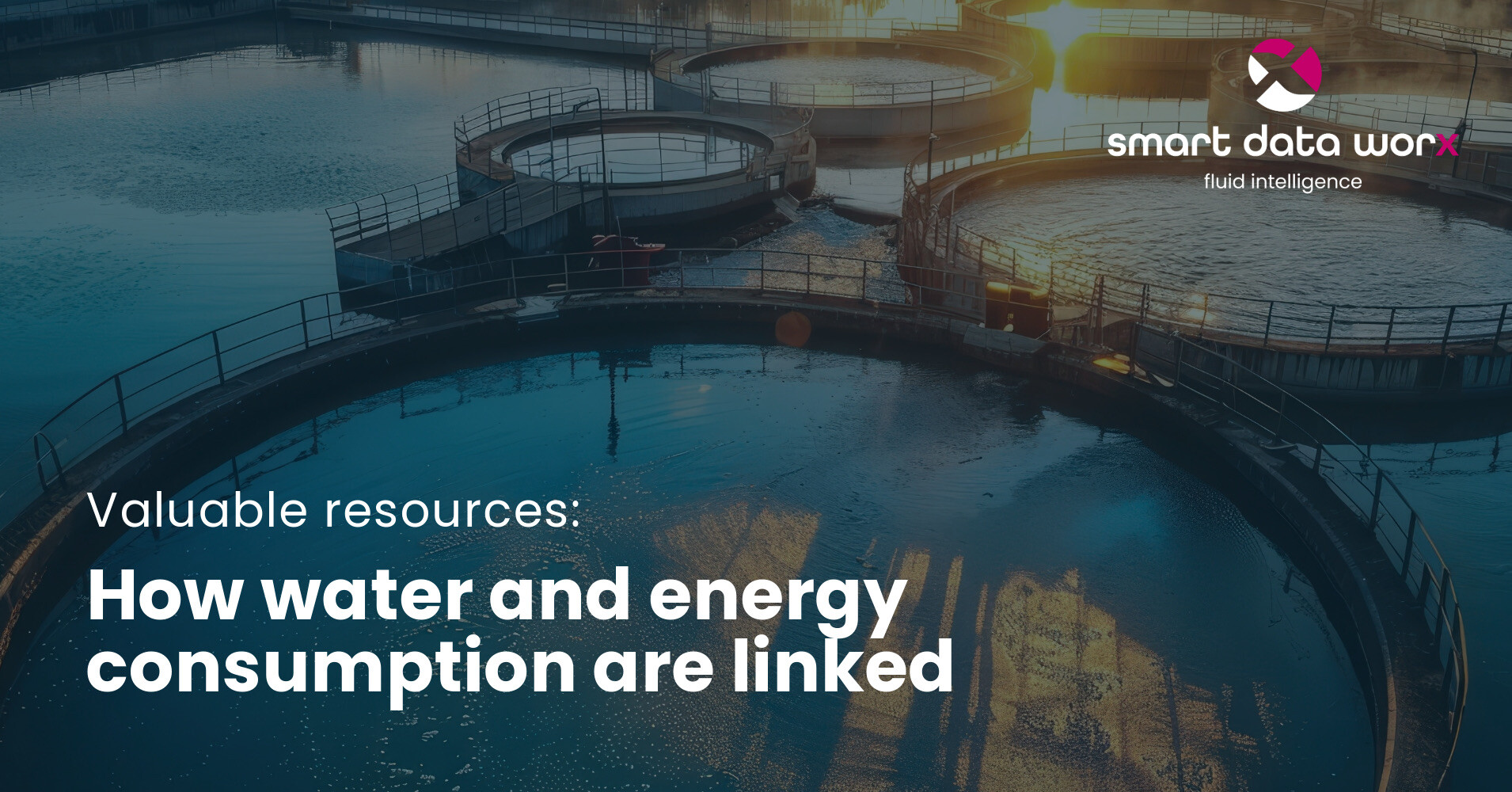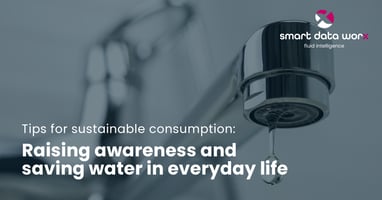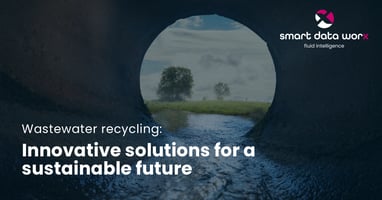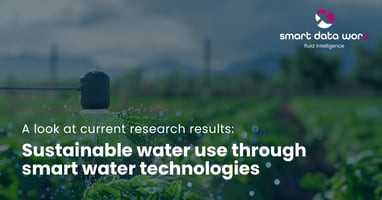Water is one of the most precious resources on our planet, yet we often take it for granted. In...
Water and energy consumption: how the two are connected

At a time when global energy demand is increasing and water scarcity is becoming an ever greater challenge, it is more important than ever to understand the relationship between water and energy consumption. While water plays a crucial role in energy production, the way energy is produced also influences water consumption. At the same time, advances in energy production - particularly the transition to renewable energy - can help to drastically reduce water consumption. In this blog post, we explore how energy production uses water resources and what solutions renewables offer to reduce water consumption sustainably.
Water consumption in energy production
Energy production is one of the world's largest consumers of water. Whether thermal power plants or hydroelectric power plants - energy production and water consumption are closely linked. However, the different methods of energy production have different effects on water demand.
Thermal power plants (coal, gas, nuclear power)
Thermal power plants that run on fossil fuels such as coal and gas or on nuclear energy are particularly water-intensive. Large quantities of water are required for the cooling processes in particular. In a coal-fired power plant, water is used to generate steam that drives a turbine. The hot water must then be cooled and reused or discharged into the environment, which can lead to considerable water losses and thermal pollution.
In many industrialised countries, thermal power plants supply the majority of electrical energy. A single coal-fired power plant can consume several million litres of water every day. This enormous water consumption not only affects the amount of fresh water available, but can also have a negative impact on the water quality of the surrounding rivers and lakes. Overheated wastewater and chemical residues from energy production pollute ecosystems and jeopardise biodiversity.
Hydropower plants
Hydropower plants are a special case, as they rely directly on water to generate energy. Although hydropower is considered a renewable energy source, water consumption is also considerable here. Large reservoirs that are used to store water for hydropower plants lead to considerable evaporation losses. In addition, the construction of dams can interrupt the natural flow of water and affect the availability of water for downstream regions.
However, in Norway, for example, a large part of the electricity demand can be covered by domestic hydropower plants.
Although hydropower is a more sustainable option compared to fossil fuels, water consumption must not be ignored. Especially in regions where water is scarce, the operation of hydropower plants can lead to problems in the long term.
How renewable energies reduce water consumption
Switching to renewable energies is not only a key to reducing greenhouse gases, but also offers the potential to drastically reduce water consumption. In contrast to fossil fuels, most renewable energies require little or no water.
Solar power
Solar systems, especially photovoltaic systems, have a very low water consumption and are therefore an environmentally friendly alternative to traditional energy sources. In contrast to thermal power plants, which require large quantities of water for cooling processes or steam generation, the water requirement of solar systems is limited to occasional cleaning work. These cleanings serve to remove dust, dirt or other deposits from the modules in order to ensure the efficiency of energy generation. This is a decisive advantage, particularly in arid and semi-arid regions, as solar systems can be operated there without any problems and without placing an additional burden on the already scarce water resources.
Another advantage of low water dependency is that solar systems can be used in a wide range of geographical and climatic conditions. While fossil or nuclear power plants often depend on the availability of cooling water and therefore have to be located near rivers, lakes or the sea, solar plants can be installed flexibly in regions with high levels of solar radiation - even in deserts or remote mountain regions.
Solar systems also help to reduce the ecological footprint of energy production. Minimising water consumption not only reduces pressure on local water systems, but also prevents potential environmental problems that can occur when heated cooling water is discharged into natural waters. In combination with its emission-free electricity production, these properties make solar power one of the most sustainable and resource-saving energy sources of the future.
Wind power
Wind turbines are another renewable energy source that uses hardly any water and therefore makes an important contribution to conserving resources. Electricity is generated directly by the movement of air currents, meaning that neither cooling water nor steam generation are required. This advantage makes wind energy not only a particularly water-friendly, but also an ecologically sustainable alternative to fossil and nuclear power plants, which often require large quantities of water.
A decisive advantage of wind turbines is their ability to be operated efficiently even in regions with water shortages or sensitive ecosystems. As the operation of the plants does not require any intervention in local water systems, rivers, lakes and groundwater reserves remain unaffected. This reduces the risk of conflicts over water resources and minimises the environmental impact of energy production.
Wind turbines can be erected flexibly at different locations, whether on land (onshore) or at sea (offshore). Offshore turbines in particular benefit from the constant and strong air currents over the oceans without affecting marine habitats through water cooling or pollution. Even in dry and windy areas such as steppes or coastal regions, they enable climate-friendly electricity production that is independent of the availability of water sources.
Geothermal energy and biofuels
Both geothermal energy generation and the production of biofuels are comparatively resource-efficient alternatives to conventional fossil energy sources, even if they are not completely water-independent. In geothermal plants, water is primarily used as a transport medium for the thermal energy from the earth. A closed cycle is often implemented in which the extracted water is returned to the original reservoir after the heat has been extracted. This not only reduces water consumption, but also contributes to the long-term stability of the geothermal system.
In the field of biofuels, water is particularly important for growing the required crops such as maize, sugar cane or oil plants. However, modern agronomic approaches, such as more precise irrigation technologies or the cultivation of plants that can manage with less water, significantly improve efficiency. In particular, drought-resistant energy crops and the utilisation of service water or rainwater are becoming increasingly important in order to further reduce water requirements and increase the sustainability of biofuel production.
A further advance in geothermal energy is the expansion of plants that manage with minimal water extraction or even completely dispense with water by utilising alternative heat transfer media such as special heat transfer fluids. Similarly, with biofuels there is a trend towards utilising waste and residual materials from agriculture, which reduces the need for water-intensive cultivation.
Overall, it is clear that both geothermal energy and biofuels are becoming increasingly sustainable thanks to innovative technologies and efficient water utilisation. They offer a promising complement to other renewable energy sources, especially in regions where water scarcity plays a role.
Synergies between water and energy savings
The transition to renewable energies opens up far-reaching opportunities to create synergies between saving water and energy. By utilising technologies that require little or no water, such as solar and wind energy, not only are water resources conserved, but the impact on ecosystems is also reduced. At the same time, CO₂ emissions are reduced, which brings a double benefit in the fight against climate change. This integrative approach shows how closely water and energy issues are linked and how both can be tackled together.
Innovative technologies play a key role in maximising these synergies. In addition to the use of waste heat and the optimisation of processes through artificial intelligence, there are other developments such as closed-loop systems in industry that use both energy and water more efficiently. For example, intelligent irrigation systems can be used in agriculture to minimise water consumption and increase energy efficiency at the same time. In urban water systems too, the use of energy-efficient pumps and sensors makes it possible to reduce water losses and energy wastage.
However, climate change is increasing the urgency of such measures. With the increasing frequency of extreme weather events, such as heavy rainfall or extended periods of drought, many regions are facing the challenge of making their water and energy infrastructure more resilient. Switching to low-water energy sources not only relieves the pressure on local water resources, but also creates resilience to climatic changes. At the same time, the integration of renewable energies into the water supply - for example through solar-powered water pumps - can improve the security of supply in remote and water-scarce regions.
Another opportunity to promote synergies lies in the circular economy. Water-intensive industries could not only recycle wastewater, but also utilise it for energy through integrated systems, for example by producing biogas from sewage sludge. Such approaches offer the potential to overcome the boundaries between energy and water management and create sustainable solutions for the future.
Overall, it is clear that the simultaneous consideration of water and energy savings not only leads to a more efficient use of resources, but also makes a decisive contribution to overcoming global challenges such as climate change and water scarcity.
Conclusion
Water and energy are closely linked, and water consumption in energy production places a considerable burden on global water resources. Thermal power plants and hydropower plants in particular require large amounts of water, which is problematic in times of increasing water scarcity. However, the switch to renewable energies such as solar and wind power offers a promising solution for significantly reducing water consumption.
Renewable energy not only helps combat climate change, but also conserves valuable water resources that are becoming increasingly scarce in a warming world. Companies, governments and society in general need to realise these synergies and focus more on sustainable energy sources to meet both the energy and water needs of the future.
Renewable energies offer the opportunity to create a sustainable future in which energy and water consumption are in harmony with natural resources.


